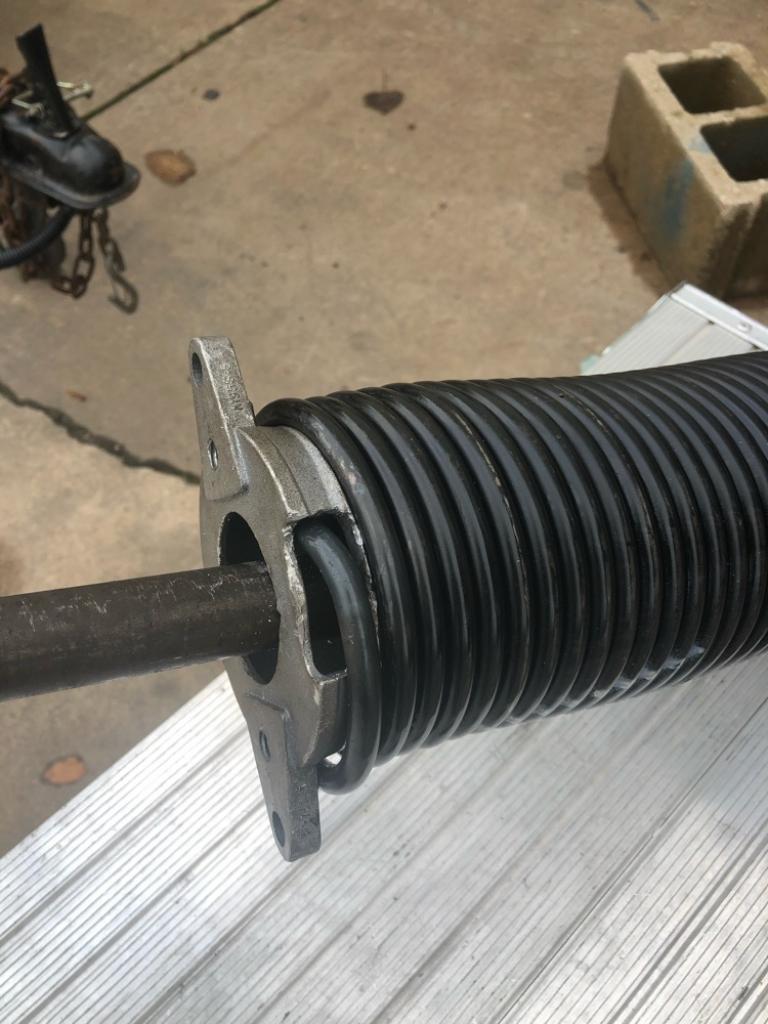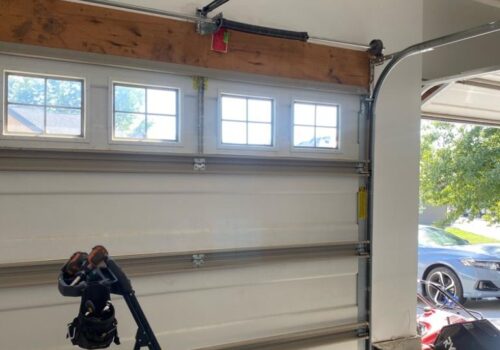A warehouse owner in Lincoln, NE, contacted us for garage door repair after their door’s industrial torsion spring got unwound. With years of continued use, it was obvious that the spring had not been checked regularly, which resulted in the cones on the steel coil springs breaking in some places. We took care of the problem very quickly by replacing the old spring. The new spring we installed had a cycle life of 100,000 uses and was guaranteed to last five years. We also upgraded those connecting cones with ones made to handle the elements better. The client was pleased with our affordable solution to fix the issue.
This warehouse owner found out the hard way that regular torsion spring service is as important as other basic building maintenance tasks, especially when there is a possibility of failure. Garage door springs can weaken with time and use—sometimes after just a few months. So should your garage door springs break, replace them ASAP before something happens. In this client’s case, the cones also broke, which led to a more expensive repair.
Now, you may be wondering what garage door spring cones are. While there are many different types of garage door springs, the spring cone is probably the part of a commercial garage door that people are least familiar with. Despite this, it is an essential component that helps keep your garage door in working order for years. Because the topic seems technical and complex, Titan Garage Doors NE is here to answer your questions and explain garage door spring cones.
What Are Garage Door Torsion Spring Cones
The die-cast aluminum components that go inside a torsion spring are called cones. Cones have two primary uses: winding and stationary.
The four holes on the winding cone allow the insertion of winding bars, which build and release the tension on the torsion springs. You can hold the counterbalance shaft in place by tightening the two set screws on the winding cone. When the door is opened, the lifting power of the spring transfers to the rest of the counterbalance assembly. That is thanks to the winding cones holding the spring to the shaft.
On the other hand, the stationary cone has two mounting holes that allow the spring to be fastened to a central bracket, which maintains the spring’s tension.
Garage Door Torsion Spring Winding Bars
Winding bars are designed to fasten torsion springs on the right side. Using the right winding bars is crucial because using the wrong ones can lead to serious injury. Therefore, you must have the correct tools and winding bars for your application and cone hole size.
Donkey Cone Torsion Spring Winding Tool
The donkey cone enables changing a 4-hole winding cone into an 8-hole cone. If the current cone is damaged, you can release the stress on the spring by increasing the number of homes in the cone. In addition, altering the tension of the spring creates a 45-degree choice with eight holes rather than the standard 90-degree option. That allows springs to be wound or unwound in cases with very little headroom without changing the size of the winding bars.
There are also winding cone covers available. These extra safety devices prevent unskilled individuals from adjusting the torsion spring by limiting access to the winding holes and set screws.
Commercial garage doors are more than just garage doors; they are an investment in your business. When you are in the market for one, you need a service provider that you can rely on. At Titan Garage Doors NE, we offer extensive garage door services to meet your needs and budget. We can walk you through getting a new garage door and answer any questions you may have. We specialize in industrial torsion spring replacement, commercial garage door repair, and more.
Our garage door torsion spring cones are the perfect way to keep your garage doors in top condition. With the latest technology and equipment, we know you will be satisfied with the results. Contact us today for a free consultation!






Comments: